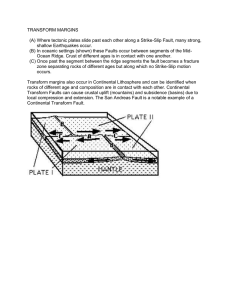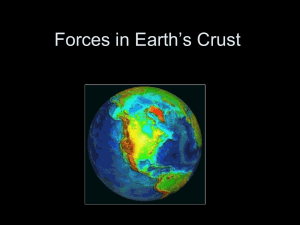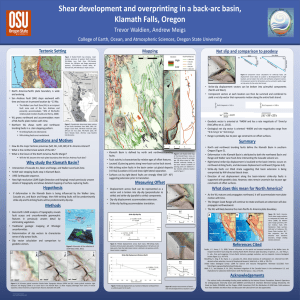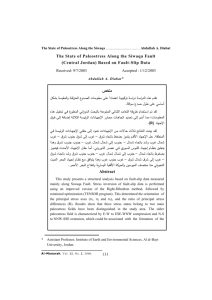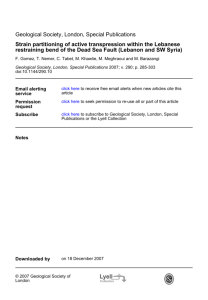Strike-slip faults
advertisement
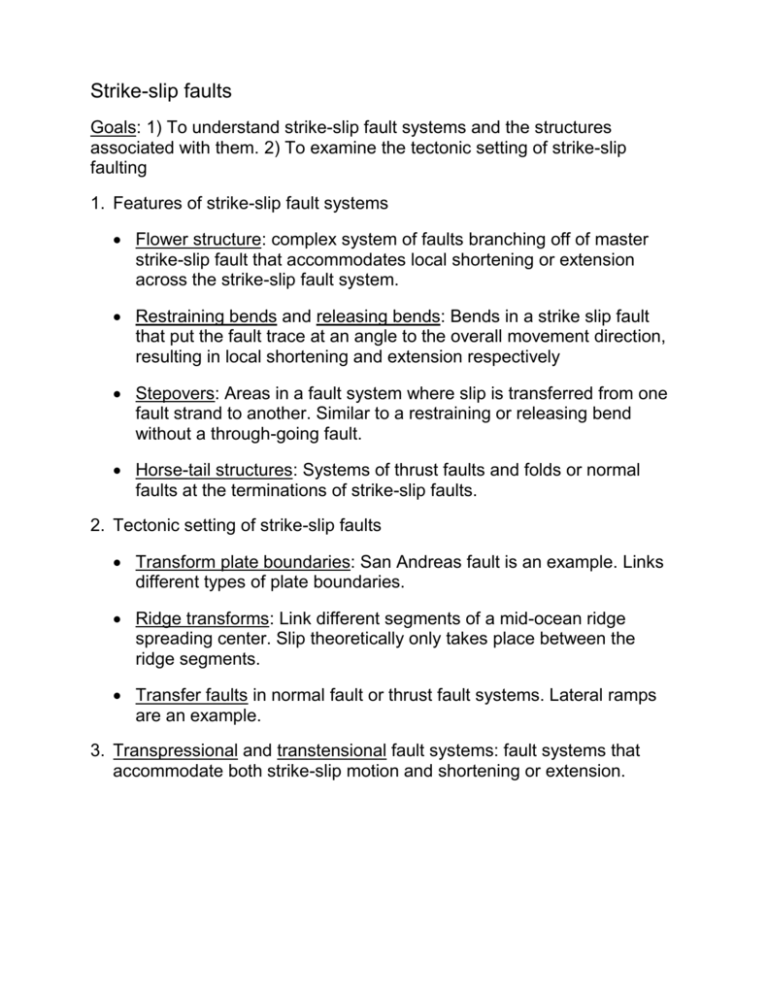
Strike-slip faults Goals: 1) To understand strike-slip fault systems and the structures associated with them. 2) To examine the tectonic setting of strike-slip faulting 1. Features of strike-slip fault systems Flower structure: complex system of faults branching off of master strike-slip fault that accommodates local shortening or extension across the strike-slip fault system. Restraining bends and releasing bends: Bends in a strike slip fault that put the fault trace at an angle to the overall movement direction, resulting in local shortening and extension respectively Stepovers: Areas in a fault system where slip is transferred from one fault strand to another. Similar to a restraining or releasing bend without a through-going fault. Horse-tail structures: Systems of thrust faults and folds or normal faults at the terminations of strike-slip faults. 2. Tectonic setting of strike-slip faults Transform plate boundaries: San Andreas fault is an example. Links different types of plate boundaries. Ridge transforms: Link different segments of a mid-ocean ridge spreading center. Slip theoretically only takes place between the ridge segments. Transfer faults in normal fault or thrust fault systems. Lateral ramps are an example. 3. Transpressional and transtensional fault systems: fault systems that accommodate both strike-slip motion and shortening or extension.
